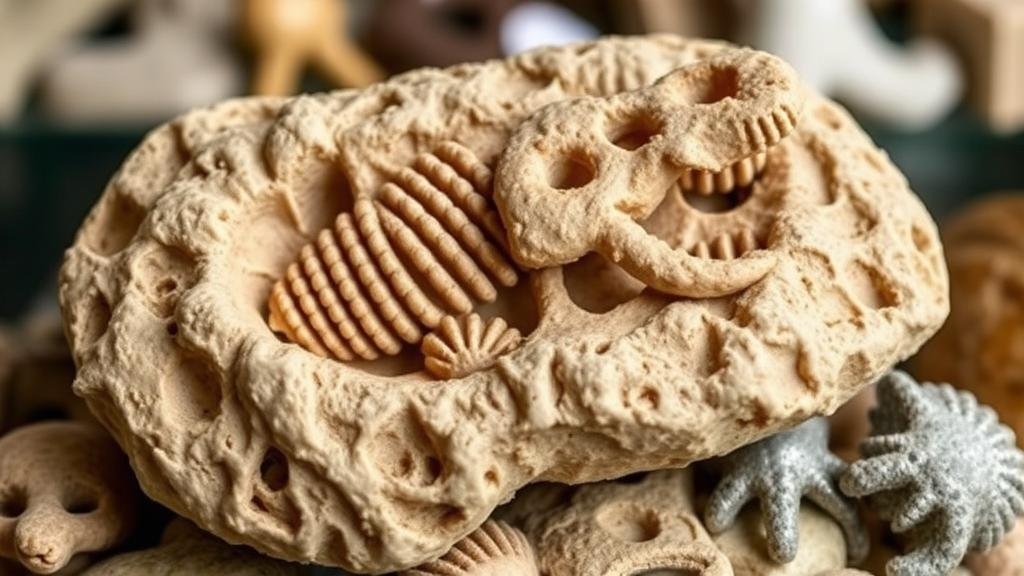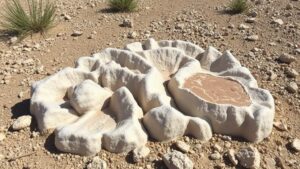Selling Fossils as Historical Artifacts: Appealing to History Buffs and Collectors
Selling Fossils as Historical Artifacts: Appealing to History Buffs and Collectors
The world of fossils is a captivating intersection of geology, biology, and history. For rockhounds and mineral collectors, selling fossils extends far beyond a mere transaction; it involves sharing a window into the ancient past. This article will delve into the nuances of selling fossils and how to effectively appeal to history enthusiasts and collectors.
Understanding Fossils and Their Significance
Fossils are preserved remains or traces of ancient life, offering a tangible connection to Earths history. can include a wide range of specimens, from large dinosaur bones to tiny ammonite impressions. According to the Paleontological Society, the oldest known fossils date back approximately 3.5 billion years, showcasing the planets vast evolutionary timeline.
By understanding the different types of fossils and their historical significance, sellers can communicate their value effectively. For example:
- Body Fossils: Actual parts of ancient organisms, such as teeth and bones.
- Trace Fossils: Evidence of organism behavior, such as footprints or burrows.
- Microfossils: Small fossils such as pollen and foraminifera, critical for understanding ancient ecosystems.
Identifying Your Target Market
When selling fossils, it is essential to identify your target audience. Two primary groups stand out: history buffs and collectors. These individuals often seek different qualities in fossils, which can guide your selling strategy.
- History Buffs: Typically motivated by the story behind the fossil, these buyers appreciate information about its geological and biological context.
- Collectors: Often focus on the rarity and condition of fossils, along with their potential for appreciation in value.
Creating an Engaging Product Presentation
A successful sale often hinges on how fossils are presented. Providing clear, engaging descriptions is paramount. Samples should include critical information such as:
- Scientific Classification: Specify the taxonomic details of the fossil.
- Geographical Origin: Indicate where the specimen was found, enhancing its story.
- Age: Include the estimated age in years, such as approximately 150 million years old for a Jurassic fossil.
- Dimensions: Provide measurements (e.g., length, width, height) to give buyers a sense of scale.
Also, high-quality images can significantly increase interest. Clear, well-lit photographs highlight the fossils details, enhancing its appeal to potential buyers.
Legal Considerations in Fossil Sales
Its crucial always to adhere to legal guidelines when selling fossils. Many regions have laws governing fossil collection and sales to protect significant historical sites. For example, the U.S. prohibits the collection of fossils from federal lands without a permit, and some countries require sellers to provide provenance documentation proving legality.
Being transparent about fossil origins not only complies with the law but also builds trust with potential buyers. Always provide customers with relevant certifications when available.
Marketing Strategies to Reach History Buffs and Collectors
To effectively reach your target market, consider employing a combination of online and offline marketing strategies. Here are a few techniques:
- Social Media: Use platforms like Instagram and Facebook to showcase your fossils with engaging visuals and stories.
- Fossil Shows and Exhibitions: Attend events to connect with potential buyers face-to-face, providing an opportunity for direct engagement.
- Online Marketplaces: Consider selling on platforms such as eBay or Etsy, where a niche audience actively seeks unique specimens.
- Educational Content: Create blog posts or videos discussing the history and science behind your fossils to attract and educate buyers.
Actionable Takeaways
In summary, selling fossils as historical artifacts can be a rewarding venture for rockhounds and mineral collectors. Focus on understanding the significance of your specimens, identifying your target market, and presenting your fossils effectively. Also, comply with legal requirements and adopt diverse marketing strategies to maximize your reach.
By taking these steps, you will not only enhance your chances of making successful sales but also share the awe-inspiring history of our planet with passionate buyers.



